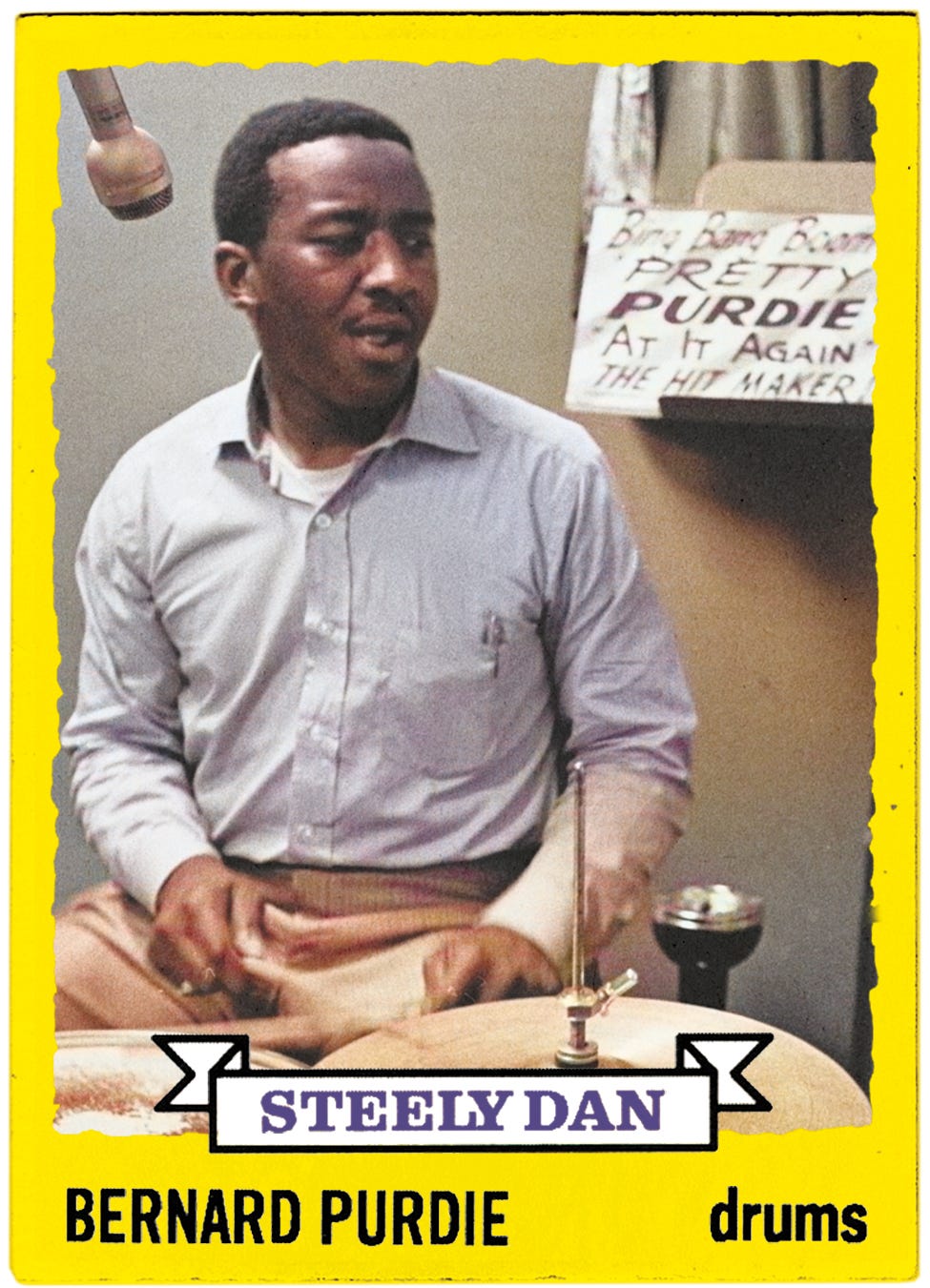Dirty Work: The Oral History of Recording with Steely Dan – Part IV
Increasingly preoccupied with rhythmic precision, Donald and Walter meet their match in Bernard Purdie.
What follows is Part IV of “Dirty Work,” my oral history of recording with Steely Dan. (Read the introduction, Part I, Part II, Part III, Part V, Part VI, and Part VII.) Only paid subscribers to Expanding Dan get access to all seven parts.
Part IV: Making Tense, Beautiful Music
Gary Katz: From The Royal Scam on, most any musician we wanted would play on a Steely Dan record. We had earned a reputation for making quality records, and they saw it as good for their careers. They played on lots of pop records, and as great as they were on those records, when they came to play Donald and Walter’s music, it was challenging, and they loved the challenge.
Donald Fagen: I think it was mostly the space we gave the musicians and our novel chord progressions. They had to actually use the stuff they’d taken a lifetime to learn.
Larry Carlton: Steely Dan was definitely more sophisticated harmonically than the majority of the pop sessions that we were called to do back in the day.
Lee Ritenour: We were all playing on a lot of jingles at the time. And there were tons of disco dates, too, that we would prefer not to talk about.
Rob Mounsey (piano): One day’s schedule was like: car commercial, beer commercial, Steely Dan session, soft drink commercial.
Randy Brecker (trumpet): Half the time you didn’t even know who you were recording for. I worked a lot for Arif Mardin at Atlantic. One session, I asked Arif who the artist was going to be, and he looked up at the ceiling and said, “Eh, it could be Aretha, it might be Bette Midler, it could even be Ringo Starr. Don’t worry about that. We’ll figure that out later.” They were just churning them out. A Steely Dan session was completely different.





